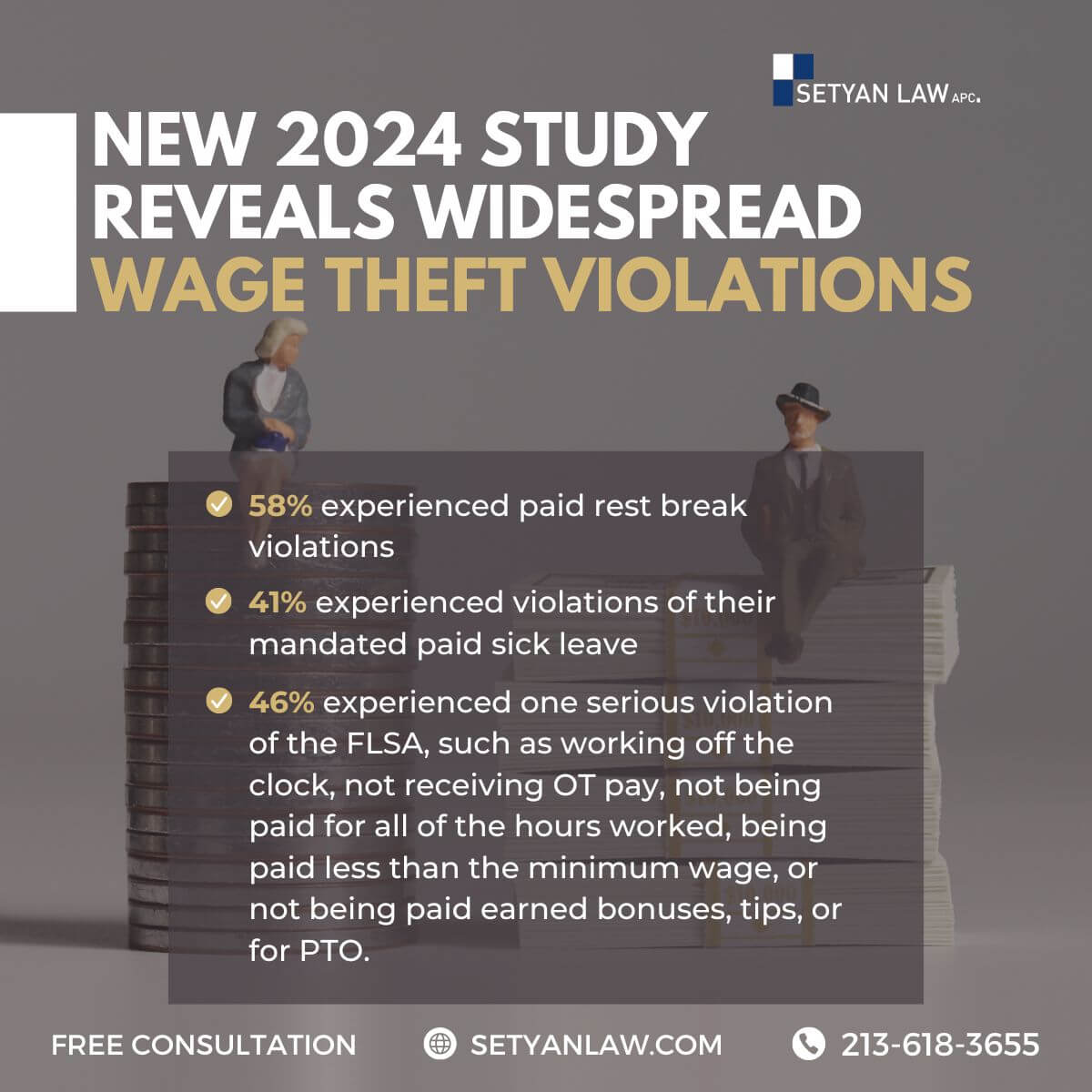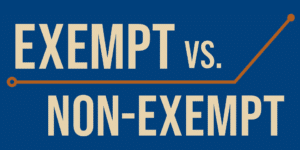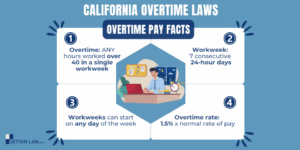Updated June 30, 2025
Discretionary vs Non-Discretionary Bonus in California: What Really Counts?
Non-discretionary bonus examples impact your paycheck more than you might realize. While many California employees celebrate receiving bonuses, few understand the critical distinction between discretionary and non-discretionary bonuses – a difference that could be costing you significant overtime pay. Performance incentives, attendance rewards, and production bonuses typically fall into the non-discretionary category, requiring employers to include them when calculating your overtime rate. Unfortunately, many employers incorrectly label bonuses to avoid these additional payments. Whether your employer provides holiday bonuses, quarterly performance incentives, or commission structures, knowing how California law classifies these payments is essential for ensuring you receive every dollar you've earned. In fact, misclassified bonuses are among the most common wage violations in California workplaces today. This guide examines what truly makes a bonus discretionary or non-discretionary under California law, how these classifications affect your regular rate of pay, and what steps you can take when employers attempt to sidestep their legal obligations.
Discretionary vs Non-Discretionary: Legal Definitions in California
California law draws a clear distinction between bonus types that significantly affects how they're paid and calculated. Understanding these differences helps employees recognize their rights and employers meet their legal obligations.
What makes a bonus discretionary under California law
Discretionary bonuses exist entirely at the employer's choice and generosity. According to California labor regulations, a bonus qualifies as discretionary only if the employer maintains complete authority over both the decision to pay and the amount until at or near the end of the relevant period. Additionally, these payments cannot result from any prior contract, agreement, or promise that would lead employees to expect such payments regularly.
The Department of Labor specifies that these "unearned" bonuses typically share several key characteristics:
- The employer retains sole discretion on whether to provide the bonus
- The timing and amount remain entirely at the employer's discretion
- Employees cannot reasonably expect or anticipate receiving them
- They aren't tied to hours worked, production metrics, or efficiency standards
Furthermore, discretionary bonuses don't factor into an employee's regular rate of pay calculations, making them separate from standard income for tax purposes.
Criteria for non-discretionary bonuses: performance and promises
Conversely, non-discretionary bonuses are considered "earned" and protected as wages under California Labor Code Section 200. A bonus becomes non-discretionary if the employer has already promised it and can no longer change the amount or timing without breaching an agreement with the employee.
The primary criteria that make a bonus non-discretionary include:
- Being tied to measurable performance metrics
- Resulting from a clear promise or agreement
- Creating a reasonable expectation among employees
- Following established formulas or standards
- Being announced to induce specific employee behaviors
These bonuses effectively become contractual obligations. Even without written documentation, consistent patterns of payment can create implied contracts. Consequently, courts determine bonus classification based on actual circumstances rather than employer labels.
Examples of each type: holiday gifts vs. performance incentives
Understanding becomes clearer through practical examples. Typical discretionary bonuses include:
Holiday gifts represent classic discretionary bonuses. These end-of-year bonuses aren't tied to performance metrics but rather serve as tokens of appreciation. Similarly, employee-of-the-month recognitions, rewards for handling stressful situations, or severance bonuses typically qualify as discretionary, provided they meet all legal criteria.
On the other hand, non-discretionary bonus examples abound in the workplace:
Sign-on or hiring bonuses promised during recruitment immediately qualify as non-discretionary. Likewise, production bonuses tied to meeting sales quotas, attendance incentives, quality and accuracy rewards, and safety achievement bonuses (such as payments for accident-free periods) all fall into the non-discretionary category.
Some bonuses exist in a gray area. For instance, referral bonuses could be either discretionary or non-discretionary depending on specific circumstances and how they're presented to employees.
Despite what employers might claim, merely labeling a bonus as "discretionary" doesn't make it so. The actual conditions surrounding the payment—not the terminology—determine its legal classification. This distinction becomes particularly important because non-discretionary bonuses must be included in regular rate calculations, directly affecting overtime pay.
How Bonuses Affect Regular Rate of Pay
Understanding the regular rate of pay remains essential for California employees who receive bonuses. This calculation affects overtime pay, meal and rest break premiums, and other wage-related benefits that could significantly impact your total compensation.
Inclusion of non-discretionary bonuses in regular pay calculations
The California Division of Labor Standards Enforcement (DLSE) mandates that non-discretionary bonuses must be included when determining an employee's regular rate of pay. Essentially, these bonuses become part of your wages, not extras or fringe benefits. Including these bonuses often results in a higher regular rate, subsequently increasing overtime payments.
The calculation method depends on the specific bonus type:
For production bonuses (tied to productivity, quality, or efficiency), employers divide the bonus by the total hours worked in the bonus-earning period. This calculation produces the regular rate on the production bonus. Overtime on this bonus type is then paid at 0.5 times this rate for all overtime hours worked in the period [1].
However, flat sum bonuses (like attendance bonuses that don't vary with hours worked) require a different calculation. As established by the California Supreme Court in Alvarado v. Dart Container Corporation, these bonuses must be divided by only the maximum legal regular hours worked, not total hours. Overtime on flat sum bonuses must be paid at 1.5 or 2 times this calculated rate for any overtime hour worked [1].
To illustrate: If Person A earns $10/hour, works 50 hours (40 regular + 10 overtime), and receives a $1,000 attendance bonus, their regular rate becomes $37.50/hour: [($10 × 50 hours) + $1,000] ÷ 40 hours [2].
Exclusions: what doesn't count toward regular rate
Not all compensation forms factor into regular rate calculations. Generally, employers may exclude:
- Gifts and payments made on special occasions as rewards for service
- Expense reimbursements
- Payments for periods when no work was performed (vacation, holiday, illness)
- Premium pay for Saturday, Sunday, or holiday work
- Discretionary bonuses
- Health insurance or similar benefit contributions
- Profit-sharing plans [1][3][4]
These exclusions allow employers to provide certain benefits without increasing overtime obligations. Notably, holiday bonuses given as appreciation tokens rather than performance incentives typically qualify for exclusion [3].
Impact on wage statements and pay transparency
California employers must document bonus payments correctly on wage statements. Labor Code section 226(a) requires employers to list non-discretionary bonuses separately from regular wages on employee pay stubs. These statements must also include the period for which the bonus was earned [5].
Moreover, when an employee receives a bonus after overtime was already paid in the period the bonus covers, employers must perform a "true-up" calculation. This recalculation factors the bonus into the regular rate and results in additional overtime payments [6].
The Court of Appeal has clarified that wage statements need only show hourly rates "in effect during the pay period." For overtime true-up payments from prior periods, employers aren't required to list previous period rates and hours on the current statement [6].
Getting these calculations wrong creates substantial legal risks. Even minimal underpayments can trigger wage statement violations and waiting time penalties that exceed the original underpayment amount [7]. Hence, both employers and employees should carefully monitor how bonuses affect regular rate calculations.
Overtime Calculations and Bonus Adjustments
Calculating overtime correctly becomes considerably more complex when bonuses enter the picture. For California employers and employees alike, understanding these calculations is crucial since errors can lead to significant wage violations.
How non-discretionary bonuses increase overtime pay
When employees receive non-discretionary bonuses, California law mandates these payments be included in the regular rate of pay—the foundation for overtime calculations [8]. This inclusion often results in a higher overtime rate than what would apply based on hourly wages alone [9].
The mathematical impact works this way: since overtime rates are calculated as 1.5 or 2 times the regular rate (depending on hours worked), any increase to the regular rate simultaneously increases overtime compensation [8]. Indeed, California's labor regulations require employers to retroactively adjust overtime payments when non-discretionary bonuses are distributed for periods where overtime was worked [5].
Unlike other states, California follows distinct calculation methods based on bonus type:
- Production bonuses (tied to efficiency or output): Divide the bonus by total hours worked in the bonus period
- Flat sum bonuses (like attendance bonuses): Divide by only the maximum legal regular hours, not total hours worked [1]
This distinction matters significantly, as the flat sum calculation typically results in higher overtime payments for employees.
Step-by-step example of bonus overtime calculation
To demonstrate, consider this scenario using a non-discretionary production bonus:
- An employee works 52 hours in one week (12 overtime hours)
- Their hourly rate is $10.00
- They earn a $138.00 production bonus for that week
The calculation proceeds as follows:
Calculate total straight-time compensation:
- Regular pay: 52 hours × $10.00 = $520.00
- Add bonus: $520.00 + $138.00 = $658.00
Determine the regular rate:
- $658.00 ÷ 52 hours = $12.65 per hour
Calculate overtime premium:
- $12.65 ÷ 2 = $6.33 additional per overtime hour
- $6.33 × 12 overtime hours = $75.92 overtime premium
Determine total compensation:
- $658.00 (straight time with bonus) + $75.92 (overtime premium) = $733.92 [8]
For flat sum bonuses, the calculation differs, as California requires dividing by only regular hours (40), not total hours worked—typically resulting in higher overtime premiums [1].
Why discretionary bonuses don't affect overtime
Discretionary bonuses stand apart in overtime calculations. Under both federal and California law, truly discretionary bonuses—those given at the employer's sole discretion without prior promises—are specifically excluded from regular rate calculations [8].
This exclusion exists because discretionary bonuses don't function as compensation for hours worked, production, or efficiency. Instead, they represent goodwill gestures not tied to employment contracts or performance expectations [1].
The practical impact? While non-discretionary bonuses must be factored into overtime calculations through the process above, discretionary bonuses simply get added to total compensation without affecting overtime rates [10]. Since these bonuses are taxed separately from standard income, they create no obligation for employers to adjust overtime rates [11].
Nevertheless, employers often attempt to classify non-discretionary bonuses as discretionary to avoid these calculations—a practice California courts routinely reject regardless of how the bonus is labeled [12].
Employer Mislabeling and Legal Risks
Many California employers attempt to minimize labor costs by mislabeling bonuses, a practice that creates significant legal exposure. Simply using the word "discretionary" in bonus documents provides no protection when actual practices tell a different story.
Why calling a bonus 'discretionary' doesn't make it so
Employers often incorrectly label bonuses as discretionary to avoid including them in overtime calculations. Unfortunately for those employers, California courts consistently look beyond terminology to examine the substance of bonus arrangements. The employer's intent and surrounding circumstances—not mere labeling—determine a bonus's true nature. As court decisions have established, once criteria for attaining a bonus are established, its discretionary nature effectively disappears, altogether transforming it into a non-discretionary obligation.
Legal consequences of misclassification
The financial penalties for bonus misclassification can be substantial. Employers face:
- Unpaid wages plus interest for incorrectly calculated overtime
- Steep fines and penalties under both FLSA and California labor law
- Wage statement penalties ($50 for initial violations, $100 for subsequent violations, up to $4,000 total)
- Waiting time penalties (up to 30 days of the employee's daily average wage)
- Class action lawsuits from multiple affected employees
- Potential civil penalties up to $15,000 per violation
- Additional penalties up to $25,000 for repeat offenders showing patterns of intentional mislabeling
Chiefly, these violations are considered forms of wage theft under California law, triggering aggressive enforcement.
How courts determine bonus type regardless of label
California courts apply several tests when evaluating bonus classifications. They primarily examine:
- Whether performance metrics determine the bonus amount
- If employees reasonably expect the bonus based on prior patterns
- Whether the bonus is announced to motivate specific employee behaviors
- If the employer retains complete control over timing and amount
- Evidence of implied promises through consistent payment practices
Evidently, courts look beyond superficial classifications to find mutual understanding between parties. The California Supreme Court has further reinforced that labor laws must be liberally construed in favor of worker protection, creating a heavy presumption against employers who mislabel bonuses.
This legal landscape means employers cannot hide behind creative bonus descriptions or carefully worded policies. Regardless of terminology, bonuses that function as incentives for performance are treated as non-discretionary wages deserving full protection under California law.
When and How Bonuses Must Be Paid
California's strict timing rules govern exactly when employers must deliver bonus payments to workers. Understanding these requirements helps employees protect their rights—especially those entitled to non-discretionary bonus examples like performance incentives or production-based rewards.
Timing requirements under California Labor Code
Throughout California, Labor Code Section 204 establishes clear timing requirements for bonus payments. Primarily, bonuses categorized as "earned wages" must be paid on the regular payday for the period in which they were earned. Once calculated, the bonus should promptly appear on the employee's pay statement, alongside other wages. Beyond mere appearance, the statement must clearly identify the period covered by the bonus payment.
Deadlines differ based on bonus classification. For instance, in some cases, employers may wait until calculation is complete after the conclusion of a performance period. Yet this doesn't permit indefinite delays—employers must process payments as soon as reasonably possible after the qualifying period ends.
Bonus payment upon termination or resignation
Upon termination, California Labor Code strictly protects employee rights to earned bonuses. Within this framework, all earned non-discretionary bonuses must be paid immediately upon termination alongside other final wages. Whenever an employee quits without notice, all unpaid wages including earned bonuses must be paid within 72 hours of their last day. For employees who provide at least 72 hours' notice before quitting, payment is due on their final day.
Importantly, if you met criteria for earning a bonus before leaving, employers cannot withhold payment simply because you're no longer employed. Yet some bonus plans include retention clauses requiring employment at the time of distribution—these clauses may be legally enforceable if clearly stated in advance.
Tax implications for cash and non-cash bonuses
Alongside timing requirements, tax considerations apply to both cash and non-cash bonuses:
- All cash bonuses must be taxed as wages
- Most non-cash bonuses (gift cards, prizes, etc.) should be taxed based on fair market value
- Supplemental wage regulations may apply different withholding rates than regular income
Ultimately, employers cannot use tax complications as justification for delayed bonus payments—California's protective stance toward employee compensation ensures prompt delivery regardless of administrative challenges.
Conclusion: Understanding Your Bonus Rights as a California Employee
Throughout this examination of California's bonus regulations, one fact stands undeniably clear: the classification of your bonus directly affects your compensation. Discretionary bonuses remain entirely at your employer's whim—unexpected gifts rather than earned wages. Non-discretionary bonuses, however, function as contractual obligations tied to performance metrics, attendance records, or production targets.
Consequently, this distinction creates significant differences in how your regular rate of pay gets calculated. Non-discretionary bonuses must be factored into your overtime calculations, potentially increasing your earnings substantially. Many employers attempt to sidestep these additional payments by mislabeling bonuses as "discretionary" when their actual nature suggests otherwise.
California courts look beyond labels to examine actual practices. Therefore, employers face serious legal consequences for misclassification, including unpaid wages, penalties, and potential class action lawsuits. The financial impact of these violations can exceed $15,000 per incident, with repeat offenders facing additional $25,000 penalties.
Timing requirements add another layer of protection for California workers. Specifically, earned bonuses must appear on regular paydays for their respective periods, with special provisions for termination scenarios. These provisions ensure you receive all compensation owed—regardless of employment status when distribution occurs.
Last but certainly not least, employees should carefully review bonus structures in employment agreements. Knowledge of bonus classification empowers you to verify correct overtime calculations and appropriate payment timing. Vigilance regarding your bonus rights helps ensure employers fulfill their legal obligations, ultimately securing every dollar you've rightfully earned under California law.
References
[1] – https://www.dir.ca.gov/dlse/faq_overtime.htm
[2] – https://perkinscoie.com/insights/blog/california-regular-rate-pay-refresher
[3] – https://www.dol.gov/agencies/whd/fact-sheets/56c-bonuses
[4] – https://www.kmrlawyers.com/what-california-employers-should-know-about-the-regular-rate-of-pay/
[5] – https://www.shouselaw.com/ca/blog/non-discretionary-bonus/
[6] – https://www.afslaw.com/perspectives/alerts/overtime-true-without-detail-ok-california-pay-statements
[7] – https://www.callaborlaw.com/entry/cdf-wage-and-hour-task-force-monthly-tips-regular-rate-of-pay-calculation-what-needs-to-be-included-and-why-does-it-matter
[8] – https://tbowleslaw.com/calculating-overtime-with-employee-bonuses-in-california/
[9] – https://d.law/7-things-to-know-about-annual-bonuses
[10] – https://www.shouselaw.com/ca/blog/how-does-bonus-pay-impact-overtime-for-non-exempt-workers/
[11] – https://www.thearmstronglawfirm.com/blog/2024/09/discretionary-vs-non-discretionary-bonuses-in-california/
[12] – https://www.primerus.com/article/bonus-pay-california-non-exempt-employees-make-sure-you-do-it-right
Call Setyan Law at (213)-618-3655 to schedule a free consultation.






